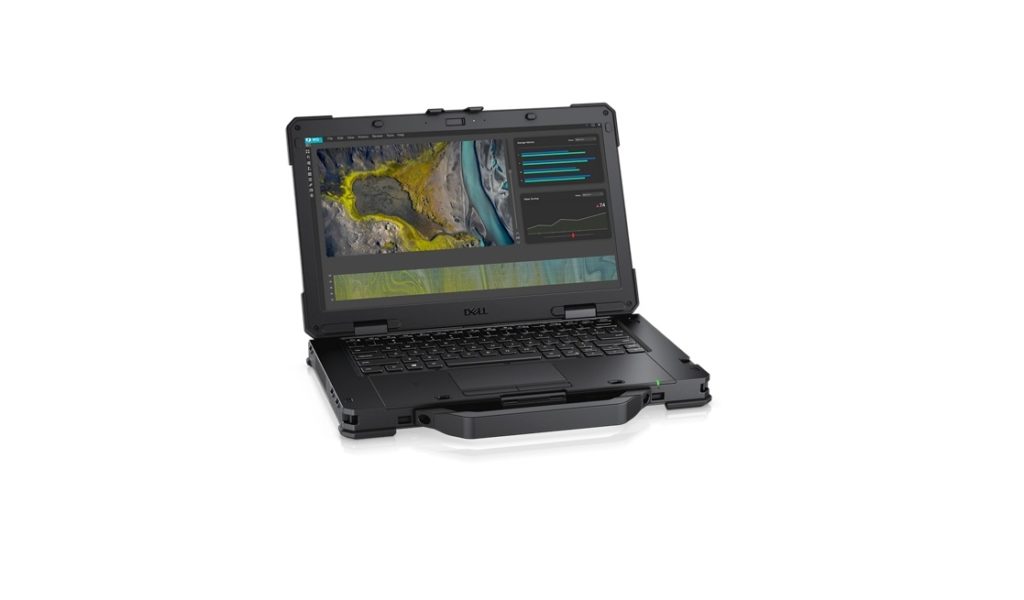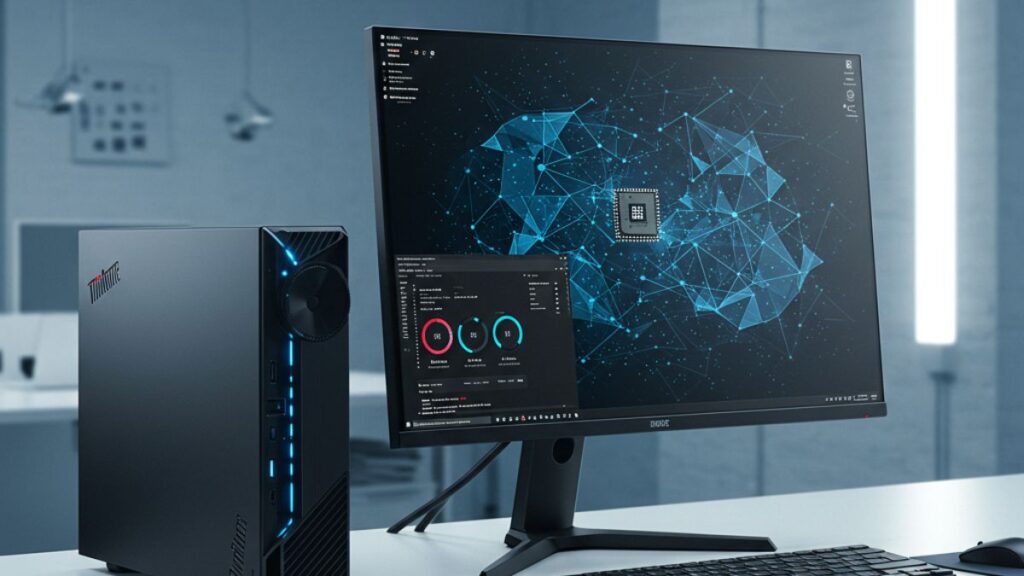It is safe to say that mobile devices, including laptops, convertible 2-in-1s, tablets and smartphones have revolutionized and fundamentally changed the ways that businesses utilize computing. However, while many mobile solutions are more or less interchangeable in terms of form factors, features and functions, some are designed to address singular applications and use cases.
Ruggedized laptops, like Dell Technologies’ new Latitude 5430 Rugged, are excellent examples of this. Though the Latitude 5430 Rugged is obviously not the product for every business situation, it is also one of the few solutions that organizations can use to address some specific situational and environmental challenges. Let’s consider why this is the case and what Dell’s Latitude 5430 Rugged brings to the table.
Defining rugged laptops
What exactly is the difference between rugged laptops and conventional devices? It mostly relates to enhanced durability in terms of resistance to shock, vibration, moisture and temperature extremes. Consider the care you need to take with a standard laptop. How a spilled cup of coffee or accidental fall from a desk or table can result in costly repairs or even replacement.
Ruggedized laptops and tablets are in a whole different class. Since many of these solutions are developed for military applications, they are subjected to testing according to U.S. Military Specifications, including resistance to functional shocks and drops, vibration, dust, humidity, water resistance, altitude and environmental temperature extremes.
For example, in testing, the Latitude 5430 Rugged survived 26 drops from 36 inches onto a hard surface (meeting MIL-STD-810 standards) and is protected against limited water spray of less than 60 degrees from vertical (meeting IP53 standards). Additionally, the Latitude 5430 Rugged can operate in temperatures ranging from -20°F to 140°F (-29°C to 60°C) and can tolerate exposure to temperatures ranging from -60°F to 160°F (-51°C to 71°C).
In other words, rugged laptops are not conventional mobile solutions, and they also require users to make certain adjustments. For example, starting at 5.5 pounds, the Latitude 5430 Rugged weighs over a pound more than the standard Latitude 5430. Plus, its big sibling, the even more stout Latitude 7330 Rugged Extreme starts at 7.6 pounds.
However, that protection against drops, shocks and other extremes comes at a literal cost. Rugged laptops and tablets are typically priced higher than comparable conventional systems (the Latitude 5430 Rugged evaluation unit Dell provided for this review starts at $3,089.00). That may put off bargain hunters, but remember that rugged solutions are designed to maintain and operate in places that will damage or destroy conventional laptops. For certain use cases in manufacturing, construction, field research and natural resource exploration, rugged laptops are the best or only option.
Dell’s Latitude 5430 Rugged
Putting aside the specialized components and capabilities, rugged laptops are mostly comparable to conventional business laptops with a few exceptions. Like other new Dell client solutions, the Latitude 5430 Rugged can be ordered with 11th gen Intel Core (Tiger Lake) CPUs. DDR4-3200 dual-channel SODIMM RAM can be configured as 8 GB, 16 GB, 32 GB, and NVMe storage choices range from 512GB to 2 TB. Buyers can also include an optional NVIDIA Quadro T500 discrete GPU.
Ports include USB 3.1 Gen1 Type A (2) & USB 3.1 Gen1 Type A (1), USB 3.1 Gen 2 Type-C (1) with Power Delivery (PD), native RS-232 serial port (1), RJ-45, gigabit Ethernet network connector (1), HDMI (1) and Universal Audio Jack. Optional ports include RJ-45 gigabit Ethernet network connector (1) and 2nd Serial, VGA, Display Port or Fischer USB. Note that ports include closeable doors to maximize moisture resistance.
What does the Latitude 5430 Rugged offer that is different? It is available with two 14-inch 60 Hz FHD (1920X1080) display options. One is a non-touch, 400-nit panel that is akin to a standard laptop. But the touchscreen (supporting glove touch) panel delivers 1,100 nits of brightness for outdoor viewing. If you don’t have experience with a display like this, it can feel like a visit to a tanning salon. But it also allows the system to be used in situations where a conventional laptop would leave you squinting
Connectivity features are also significantly richer than those conventional laptops offer. Along with support for Wi-Fi 6E, buyers can purchase optional 5G service supported with the Snapdragon X55 5G modem. The Latitude 5430 Rugged is also FirstNet Ready with Band 14 supporting mission-critical connectivity during emergencies. An optional dedicated u-blox NEO-M8 GPS card is also available.
In addition, the Latitude 5430 Rugged includes a dual hot-swappable battery system comprised of two 3-cell 53.5 Wh batteries that are available in ExpressCharge and Long Life Cycle versions. Dell claims a battery life of 25 hours (with both batteries fully charged) and the ability to charge up to 35% of the battery in 20 minutes. With the Express Charge option. The battery covers feature discrete buttons to manually check power levels.
The evaluation system Dell provided has a 11th gen Intel Core i7-1185G7 processor, 16GB of RAM, a 512GB SSD, the 1,100 nit touchscreen display and a stylus residing in a dedicated slot that attaches to the laptop with a flexible lanyard. The system also included the optional handle that allows the laptop to be carried easily without a backpack or case.
Performance was as solid and peppy as you would expect from a laptop with the latest generation Intel Core i7 processor and 16GB of RAM. I was also impressed by the clarity and brightness of the display—a longstanding option in Dell’s Latitude Rugged line.
Were there any shortcomings in the Latitude 5430 Rugged? Practically speaking, not really. While using the display at higher or maximum brightness will obviously take a toll on battery life, the dual battery system provides enough overhead to make outdoor use and viewing workable in most circumstances. Some might argue that the extra weight makes mobility claims somewhat tenuous, but those extra ounces are tied directly to the system’s shock and drop resistance.
The larger point is that physical properties aside, the Latitude 5430 Rugged proves that businesses that require extraordinary performance from mobile computing devices don’t have to surrender anything in terms of user experience and system performance. Add that to its extra-durable features and many customers are likely to consider Dell’s Latitude 5430 Rugged a bargain.
Final analysis
Rugged laptops and tablets have long been a somewhat rarified sector, populated mostly by specialty vendors and solutions, like Panasonic, Getac, Durabook and DT Research. Dell entered the rugged solution market in 2008 with its ATG series, shifting to the Latitude Rugged designation about six years later. Until Acer entered the space in 2020 with its Enduro line, Dell was the only major laptop vendor bringing ruggedized solutions to market.
What has been particularly interesting about Dell’s approach is how it has enlivened and enhanced its rugged solutions with technologies and features initially developed for commercial client products, including Latitude and XPS laptops. That has enabled the company to create solutions that are often more sophisticated than those competitors offer, and better attuned to the needs of end users, commercial customers and specific industries.
The Rugged Latitude line also underscores Dell’s strategic intention to help customers succeed in what has increasingly become a “Do-Anything-From-Anywhere World.” Overall, commercial customers are likely to find Dell’s Latitude 5430 Rugged to be a solid solution for extreme business and environmental challenges.



